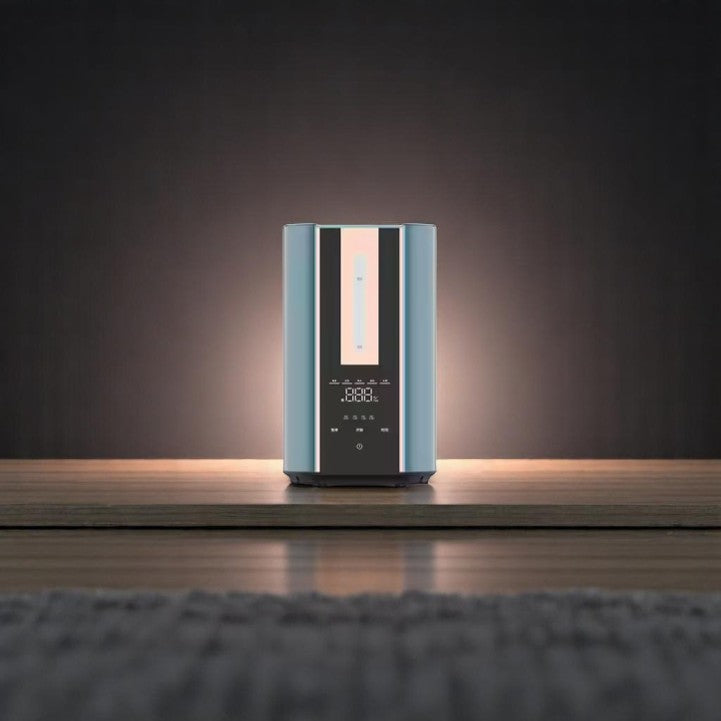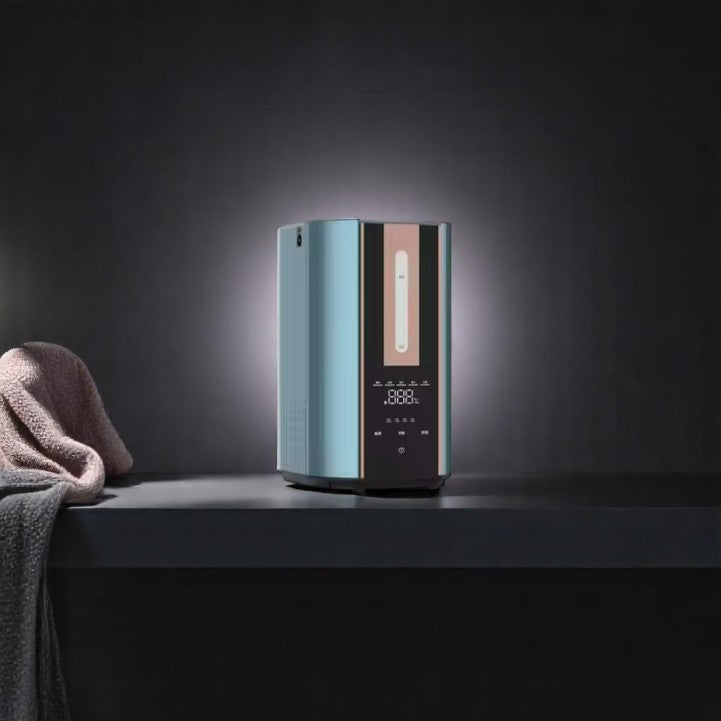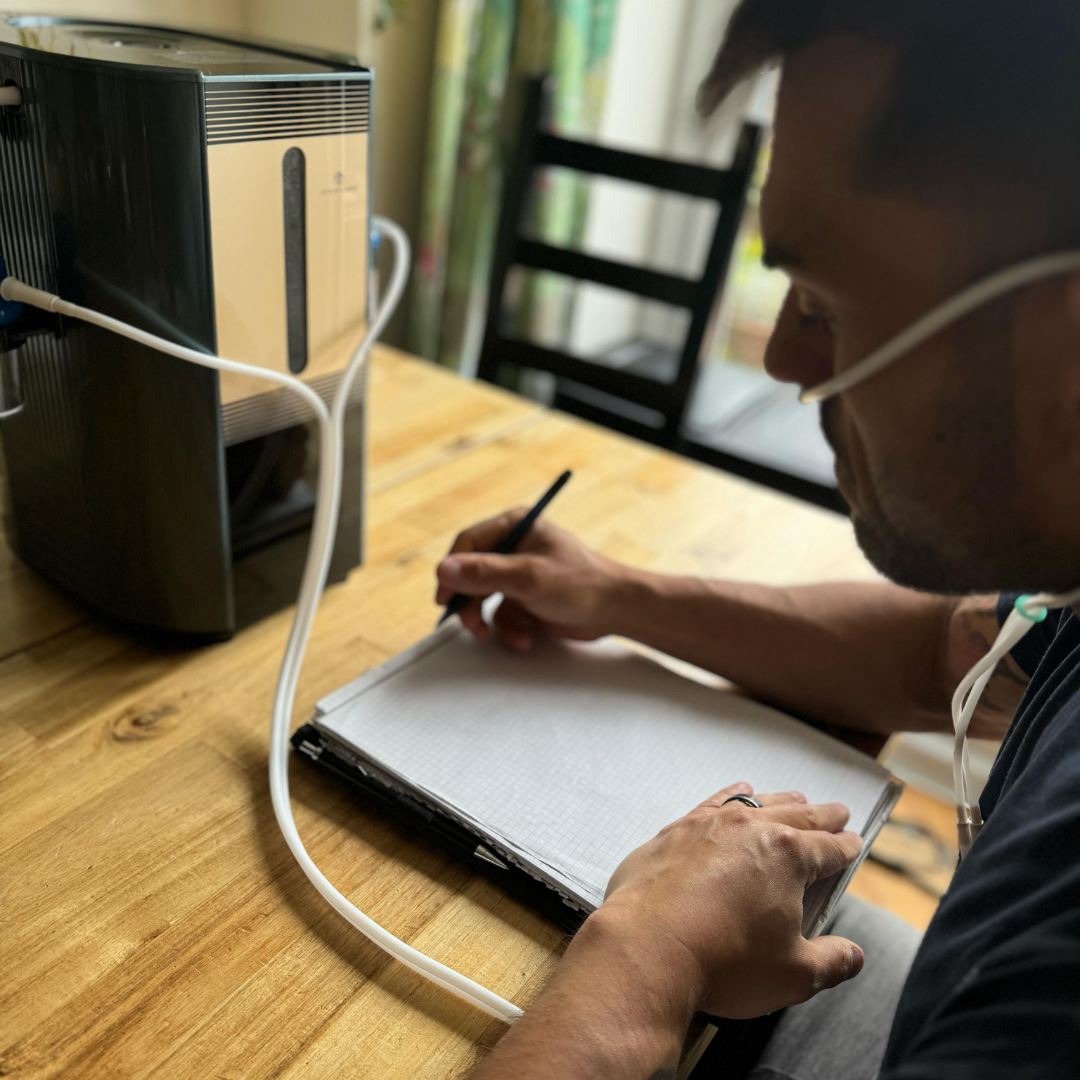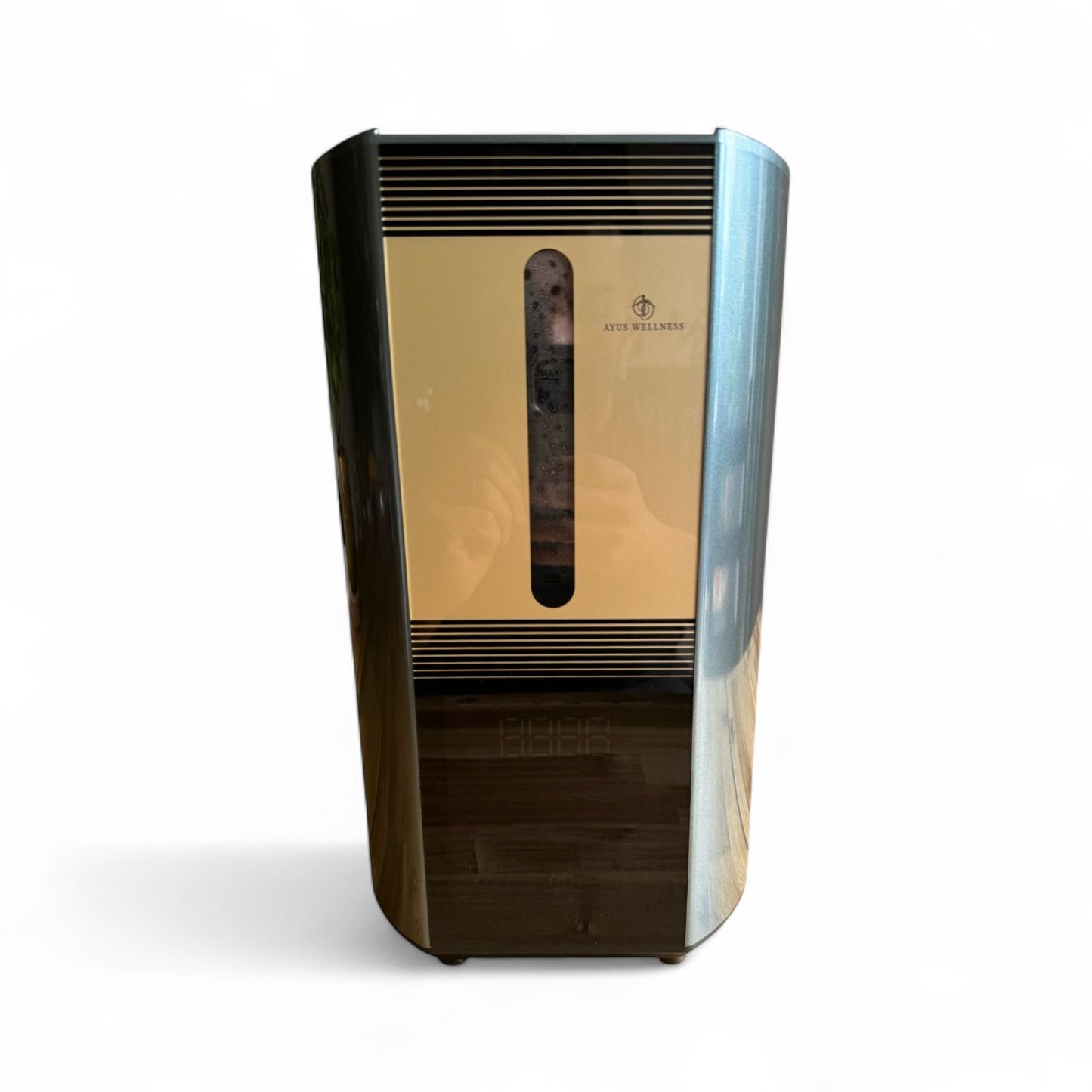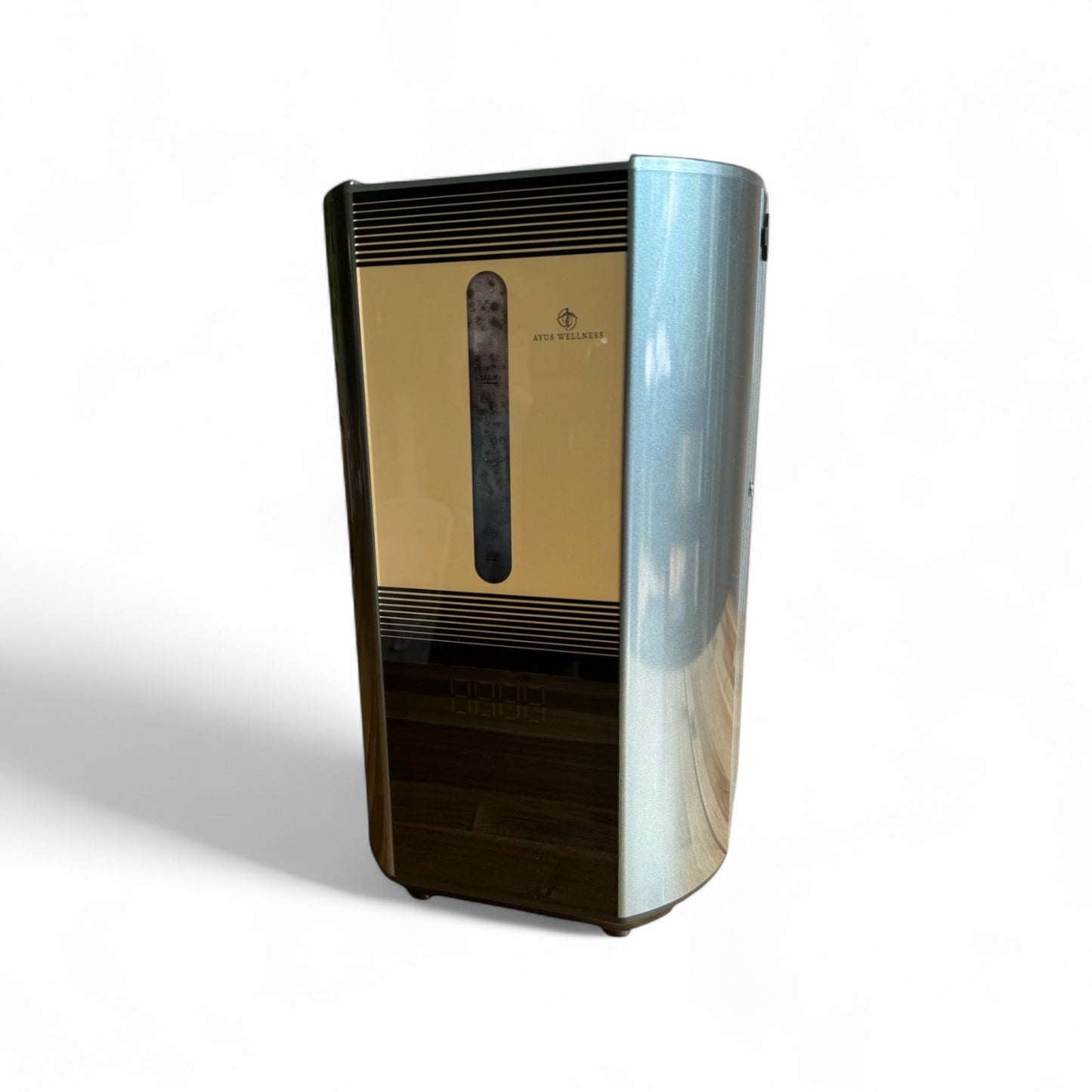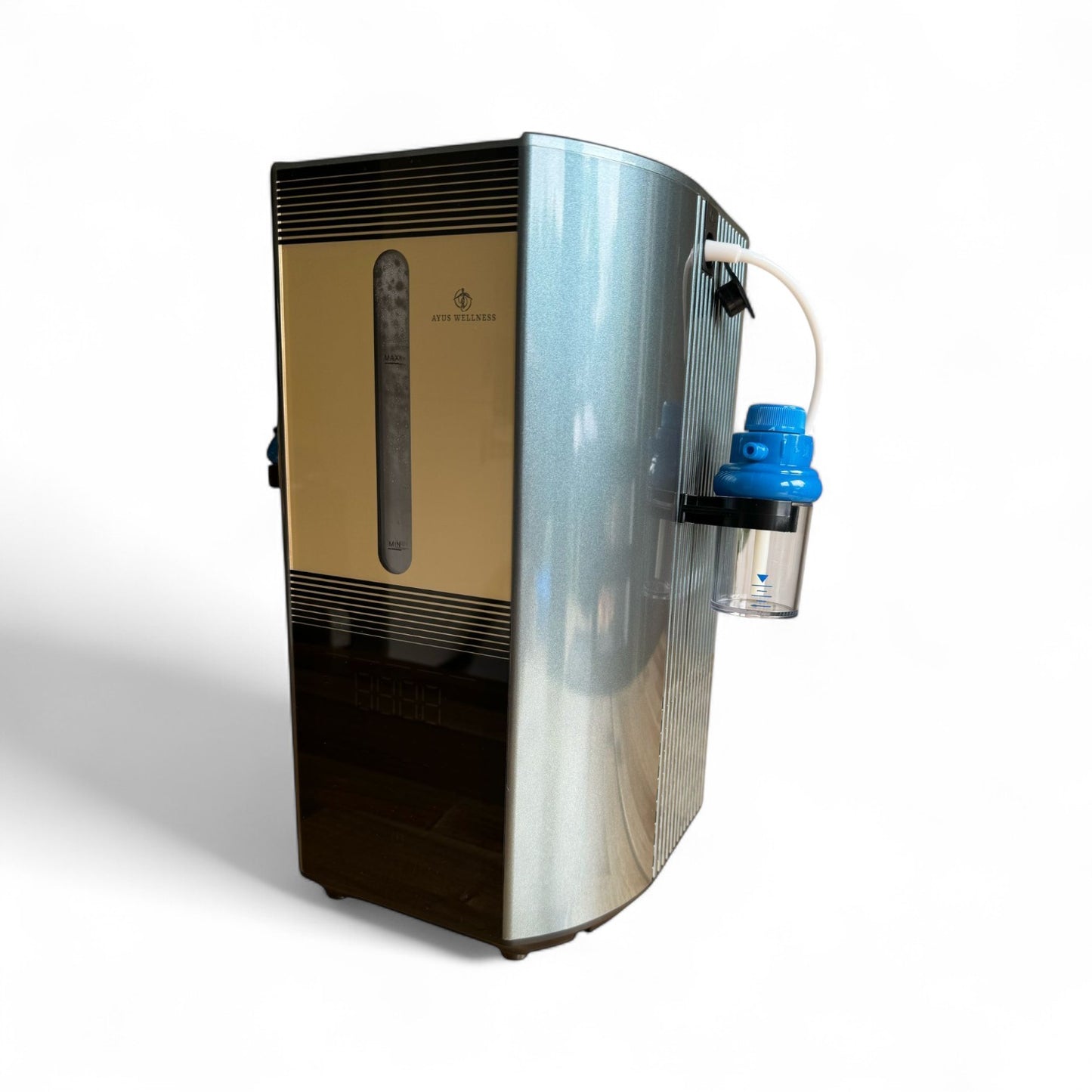This store requires javascript to be enabled for some features to work correctly.
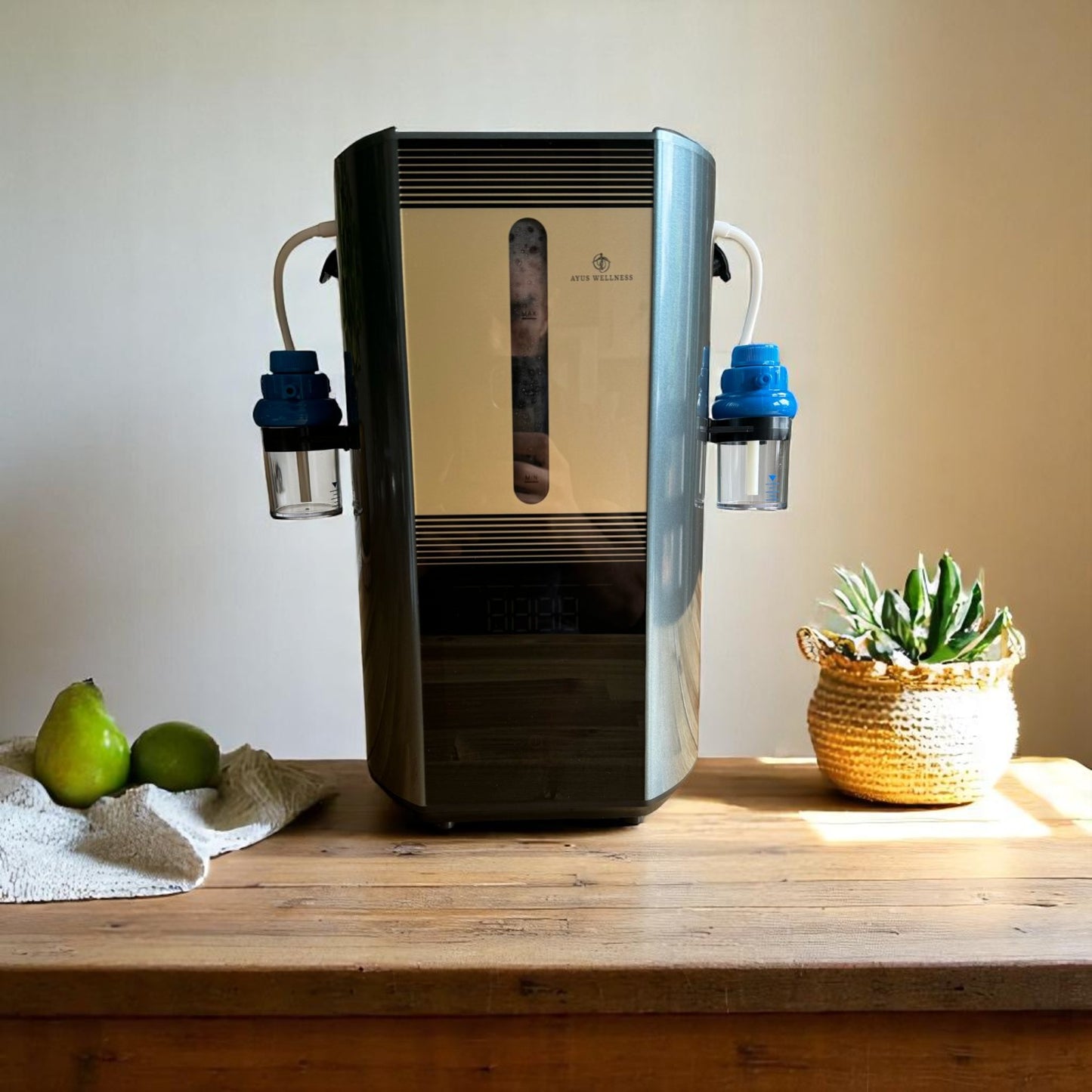
Hydrogen therapy involves inhaling molecular hydrogen (H₂) gas, which has been shown in numerous clinical and preclinical studies to offer a range of physiological benefits.
- Molecular hydrogen can reduce harmful reactive oxygen species (ROS), which are known to contribute to oxidative stress, a key factor in ageing and disease. Unlike broad-spectrum antioxidants, hydrogen does not interfere with essential metabolic signalling molecules.
- Preliminary research indicates that hydrogen may suppress pro-inflammatory cytokines, thereby helping to reduce inflammation, particularly in the lungs and vascular system.
- Ongoing trials are exploring hydrogen’s ability to support cognitive function, improve mitochondrial efficiency, and reduce symptoms of metabolic syndrome
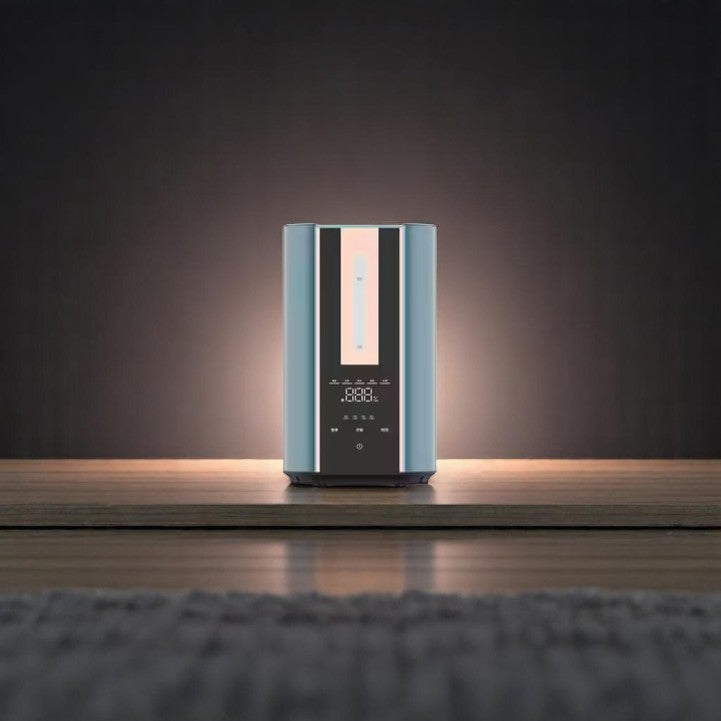
Respiratory Support
Hydrogen therapy may help those managing chronic respiratory conditions such as asthma, COPD, or general lung inflammation. Early studies suggest improvements in airway function and oxygen saturation when molecular hydrogen is regularly inhaled
Cellular Protection
Free radicals and oxidative stress are linked to ageing, inflammation, and disease. Hydrogen is a selective antioxidant, meaning it neutralises only the most harmful free radicals — without disrupting healthy cellular processes. This helps maintain your body’s natural balance while supporting long-term wellbeing.
Enhanced Recovery and Performance
Athletes and high-performers use hydrogen therapy to accelerate post-exercise recovery, reduce muscle fatigue, and improve energy levels. One study found that hydrogen inhalation helped reduce blood lactate levels after strenuous physical activity.
Cognitive and Mood Support
Though still under investigation, hydrogen’s ability to cross the blood–brain barrier means it may influence brain health, improving alertness and potentially helping to regulate mood and cognitive decline over time.
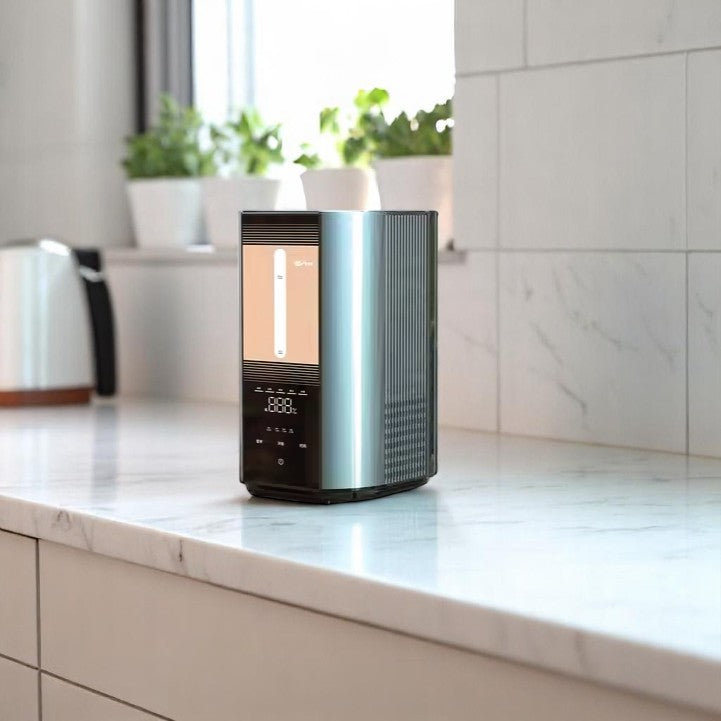
With its compact, refined build, the device can be placed on a nightstand, desk, or shelf without disrupting the aesthetic of your environment.
Hydrogen inhalation therapy involves breathing in molecular hydrogen (H₂) gas, typically through a nasal cannula. This gas is known for its antioxidant and anti-inflammatory properties. Scientific studies suggest it may help protect cells from oxidative stress, support respiratory health, and aid in general wellbeing.
Yes, when used correctly and at medically approved concentrations, hydrogen gas is completely safe for human inhalation. The Ultimate Hydrogen Inhaler produces hydrogen at levels that are well within safety thresholds, and the device includes multiple built-in protections such as overheat sensors and automatic shut-off.
The Ultimate Hydrogen Inhaler is ideal for:
- Individuals seeking to enhance their health and wellness routine
- Those living with chronic respiratory conditions such as asthma or COPD
- Athletes or active individuals looking for faster recovery
- Anyone interested in anti-ageing or longevity tools
If you have a pre-existing health condition, we recommend consulting your GP before use.
We recommend starting with 20 to 30 minutes per session, once or twice a day. Over time, this can be adjusted based on your wellness goals or practitioner advice. The device is designed for daily use and can be integrated into your morning or evening routine.
Reported benefits from hydrogen inhalation include:
- Reduced oxidative stress
- Improved respiratory function
- Faster recovery after physical exertion
- Enhanced energy levels
- Sharper mental clarity
While these benefits are supported by early-stage research, individual results may vary and ongoing studies continue to explore the full potential of hydrogen therapy.
Not at all. The Ultimate Hydrogen Inhaler operates at under 30 decibels – quieter than a whisper. It’s perfectly suited for use while working, meditating, or winding down before bed.
Each purchase includes:
- The Ultimate Hydrogen Inhaler
- Nasal cannula
- Power adapter (UK plug)
- Printed and digital user manual
- Quick start guide

